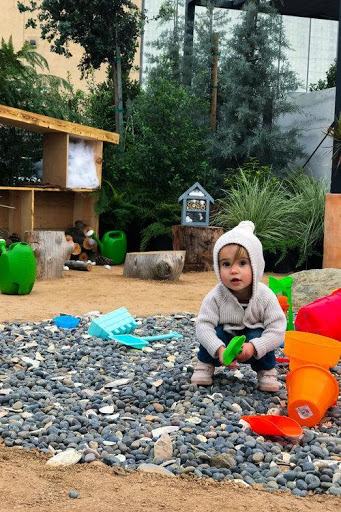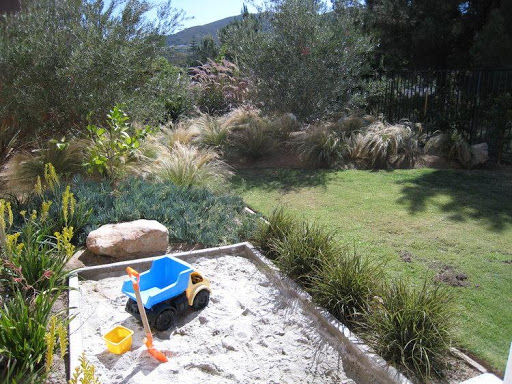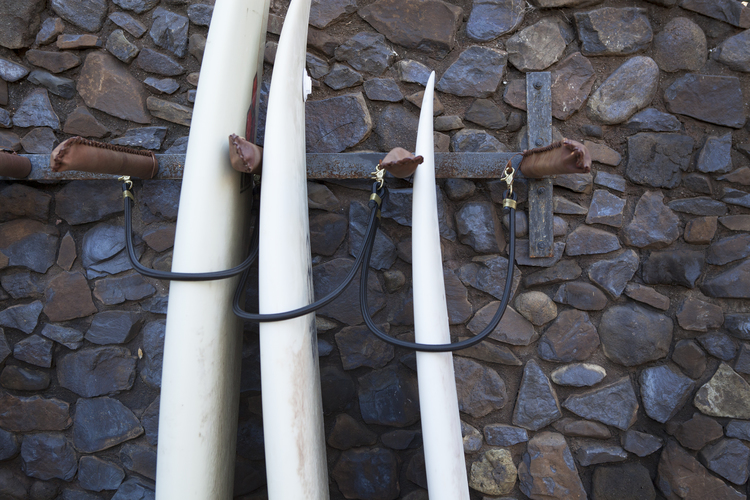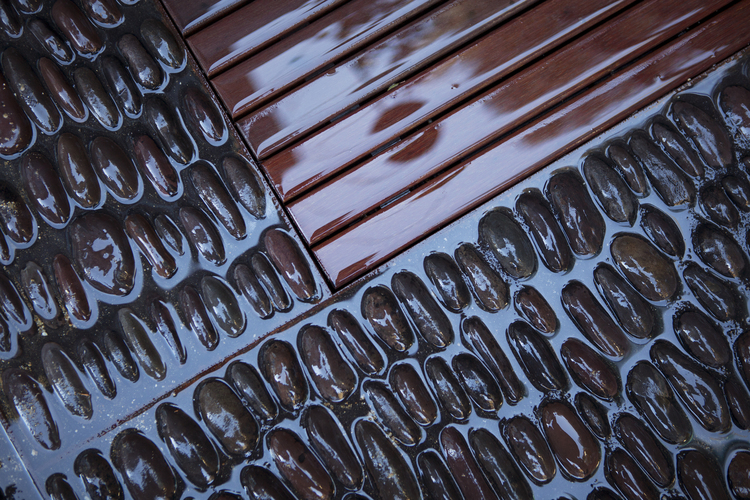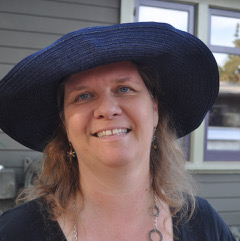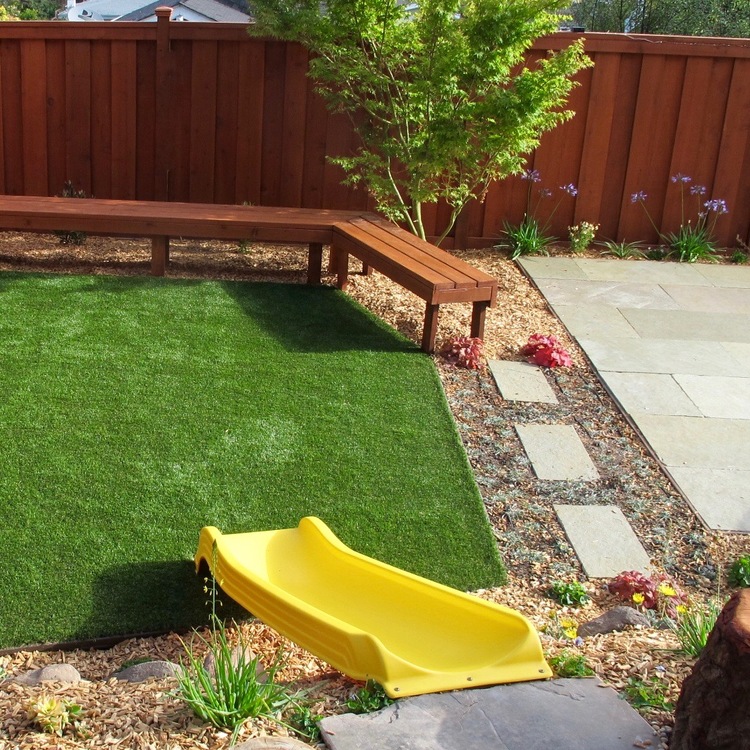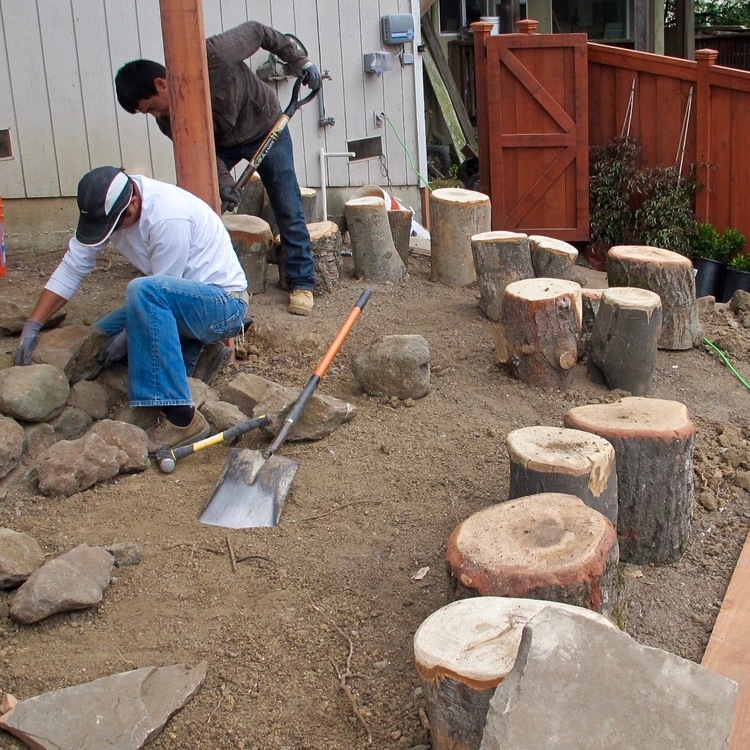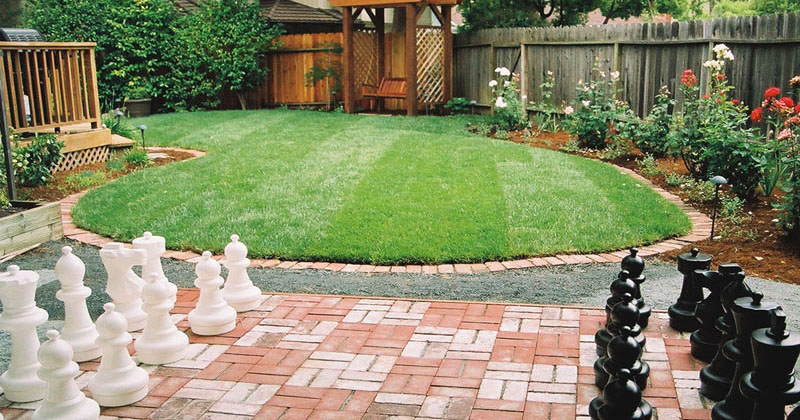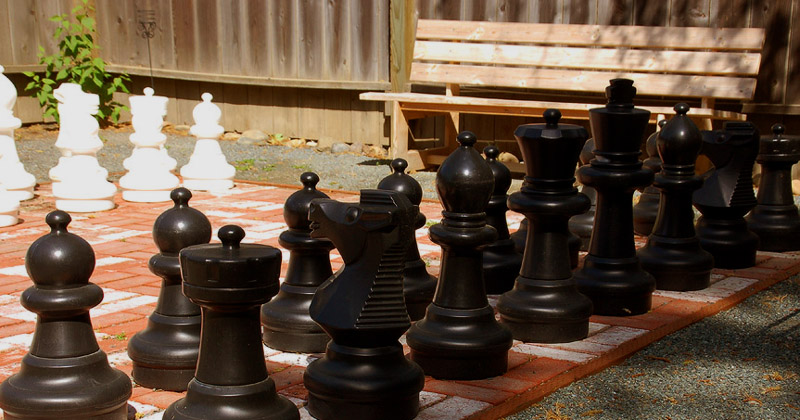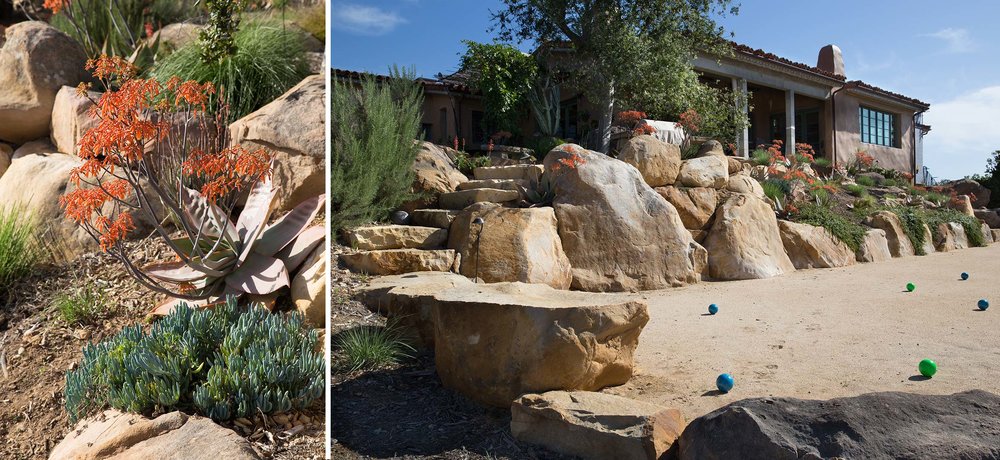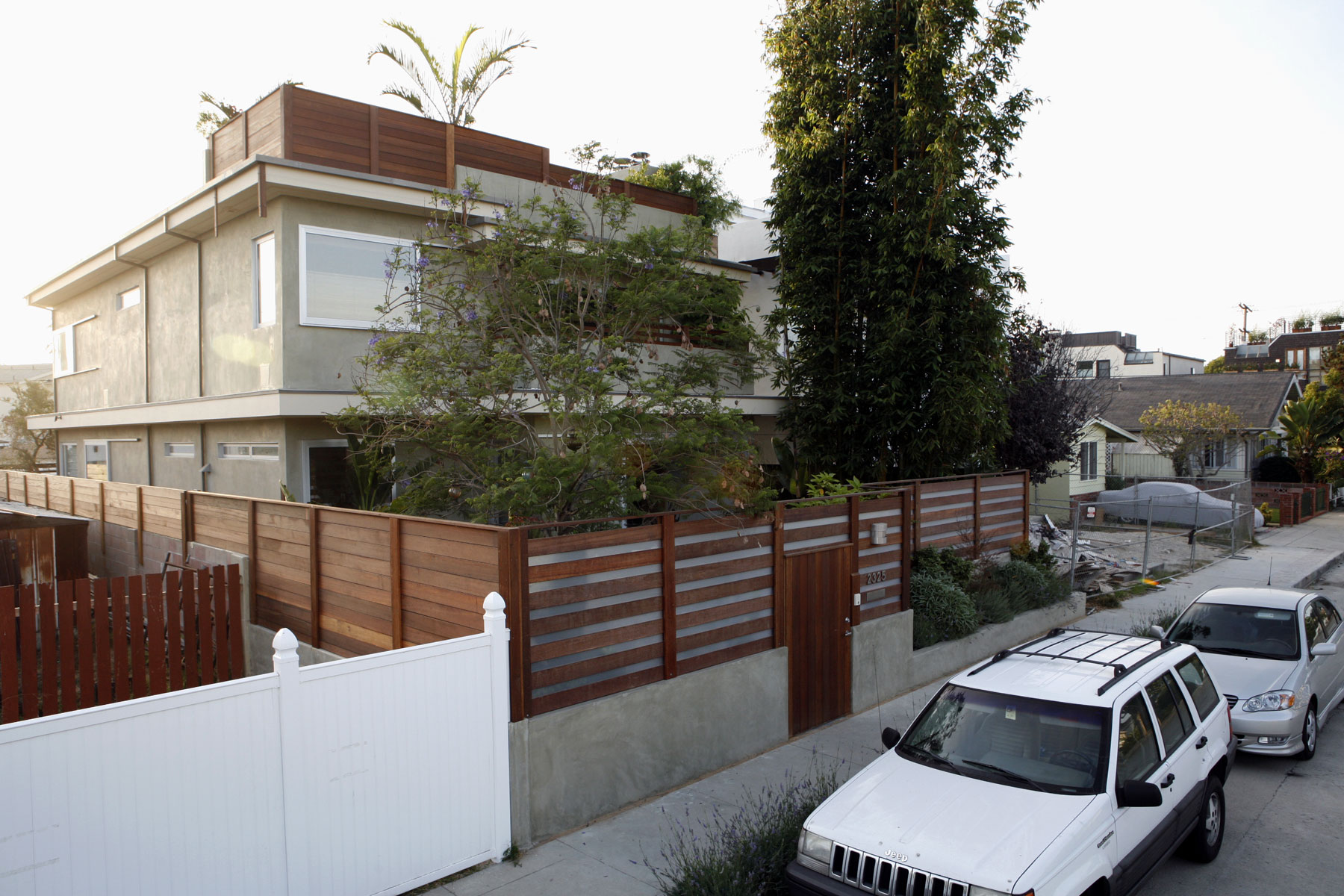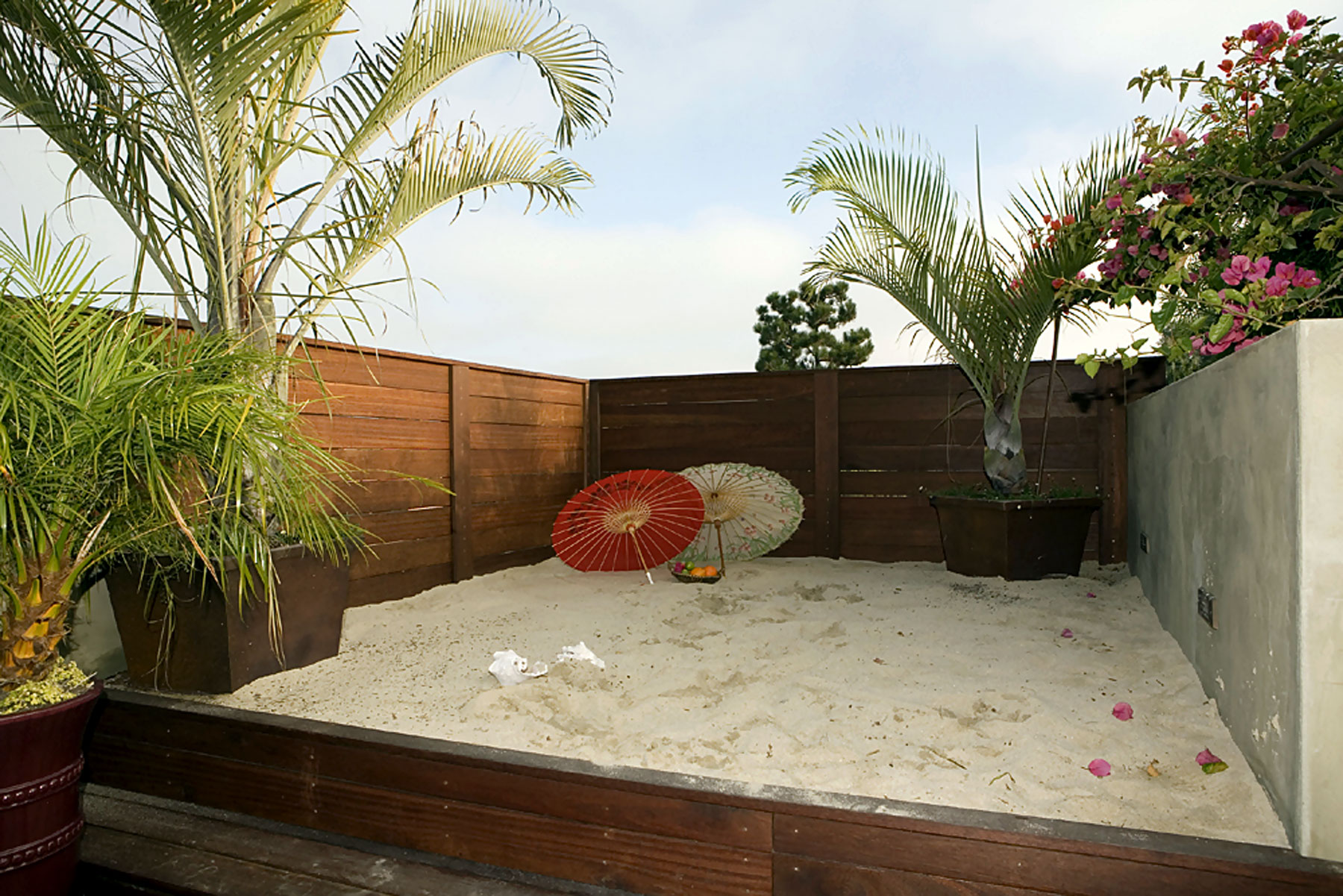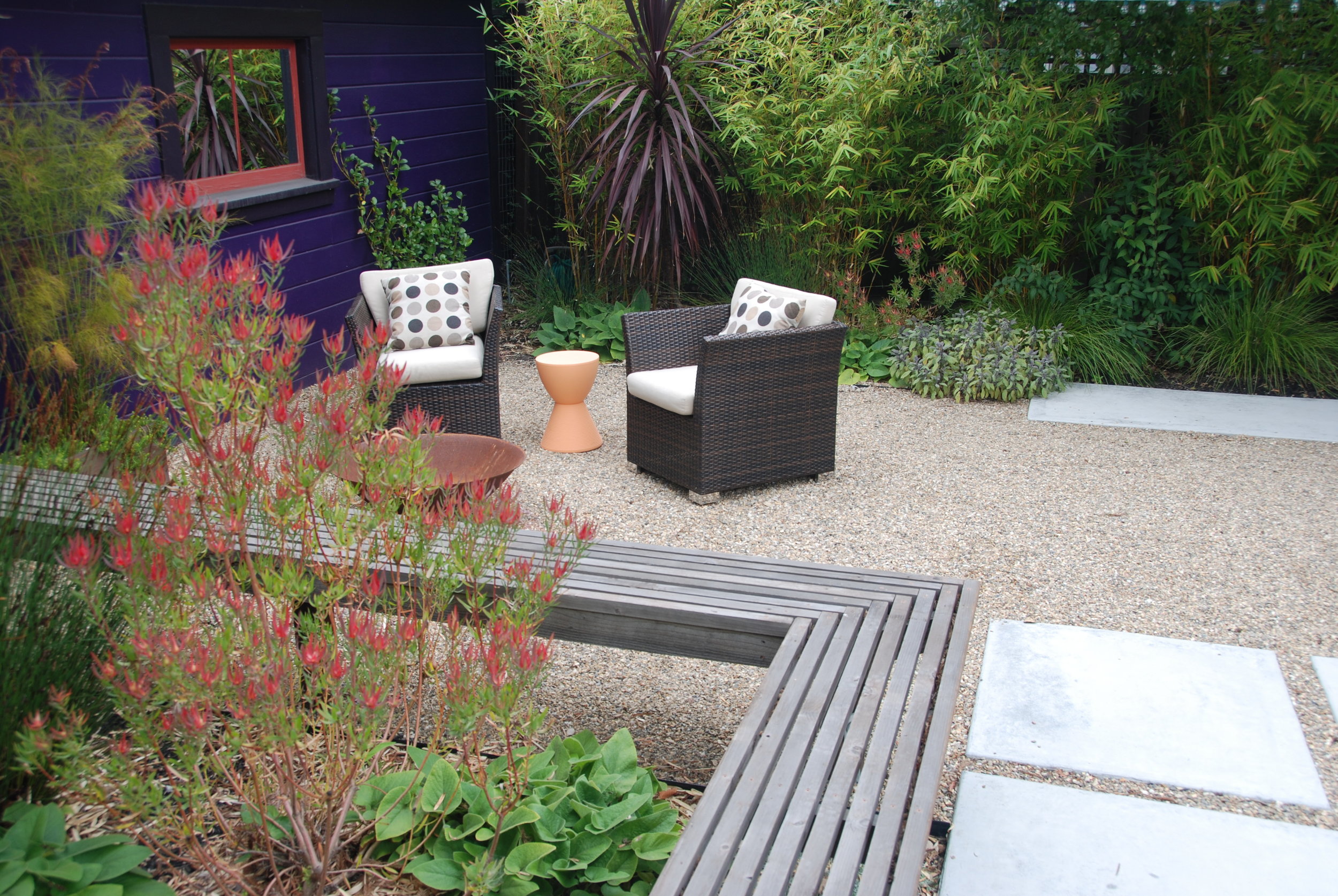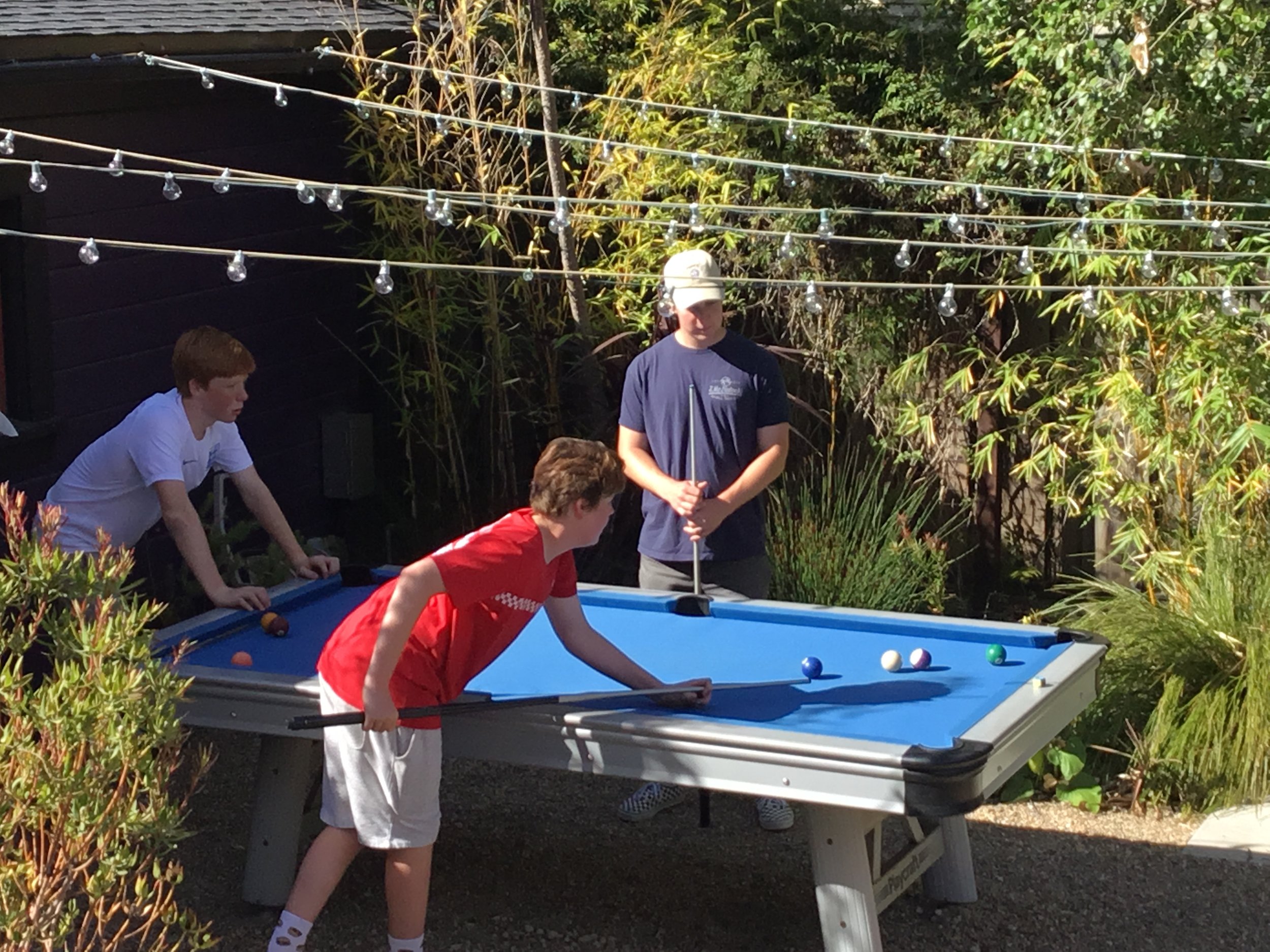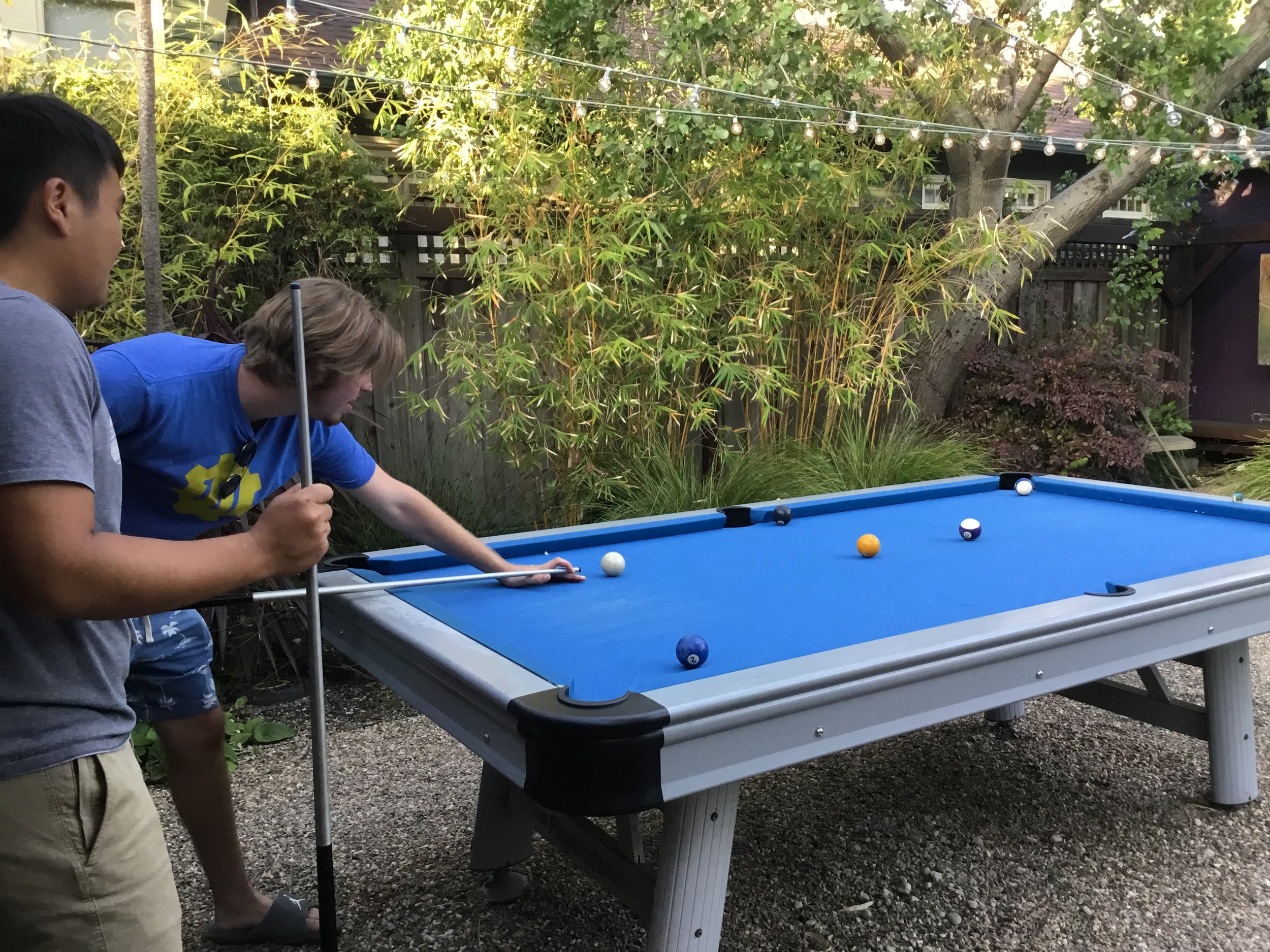Photo courtesy of Laura Morton, FAPLD.
TOOLS AND TIPS:
Designing Outdoor Play Spaces for Children
by Laura Henry Kukulski
Terralinda Design, Oakland, CA
When designing a residential garden for a family with young children, we have amazing opportunities to create space for children to play.
Play space can be integrated seamlessly into any landscape design. Outdoor play for children is not just about large lawns or big expensive play structures. In many places around California, lawns are not a possibility, as well as not advisable, and many people do not have space for large structures. But that is fine! There are so many other ways that children play! A good play space provides room for physical, social, dramatic, cognitive play, and can invite many kinds of spontaneous activity.
It can be hard to know what exactly a child will engage and play with, especially if you have only met them once or twice. You should get some basic information about a child’s personality from the parents. Ask questions like: is your child more prone to active play or imaginative play? Do they seek out sensory input, have big energy, or like to create with their hands, or do they seek out quiet spaces for contemplative play?
Aim to create spontaneous, organic play for kids by including natural elements that allow for undirected and open-ended play.
Photo courtesy of Laura Henry Kukulski.
Encouraging Diverse Play
by Annie Potter, Associate Designer at Falling Waters Landscape
At Falling Waters, we praise all things having to do with the landscape. This extends into our belief that the outdoor experiences of a child's day are vital to their mental, physical, and social growth. Children learn best when all of their senses are activated. Unlike adults, they cannot sit in a two hour lecture given solely by word of mouth. In order to imprint a lesson into a child's mind, information has to be presented to them as something worth remembering. By allowing them to physically engage in the subject matter and personally see and feel it in real life, children will get excited for the lesson and their brain will absorb it more fully. For instance, showing a picture of the photosynthesis process is nothing compared to actually seeing it happen. In order to keep children engaged and constantly growing their breadth of knowledge, their interaction with their natural environment should be a key priority during the day.
Photos courtesy of Ryan Prange, Principal at Falling Waters Landscape.
EDIBLE GARDENING WITH CHILDREN
by Joan Bolton
Santa Barbara Garden Design, Goleta, CA
School's out and there's no better time to enlist your kids to grow fresh edibles. Many summer crops grow fast and yield bounty that children like to eat. Start your kids playing in the dirt early, and they'll develop an appreciation for home-grown food and healthy habits for life.
If you don't have children, gather your neighbors' kids instead. Or simply vow to rediscover your inner child by taking time to view your garden with wide-eyed wonder, kneeling down to breathe in the scents and to inspect your emerging edibles from a ground-level perspective.
With the popularity of school gardens, some parents may even face a bit of role reversal, with their kids being the ones pestering them to plant veggies. Regardless of the youngsters you round up, don't be intimidated if they seem to have more gardening experience than you do. The following is a quick-start guide, no matter who's just beginning to dig in the dirt.
Photo courtesy of Margie Grace, APLD.
DOWNLOADING WONDER
by Laura Morton, FAPLD
Laura Morton Design, West Hollywood, CA
Call me old-fashioned, but what happened to making mud pies and finding crickets as a way for kids to pass time?
I’ve always felt my job, or at least the subtext in my work as landscape designer, should awaken some childlike wonder and comfort with the natural world—for children and adults alike. Biology and architecture: it’s our science, and the way we design can make discovery fascinating.
My most memorable childhood adventures don’t include play sets so much but being told to "go play outside!" and then occurred the meander, testing of boundaries, and accidental discoveries like a birds nest, bug, or hiding place. The natural world offers seasonal changes that help subtly understand the passage of time, set anticipation, and help say goodbye. And there are the raw materials for creative play—leaves, soil, sticks, and seedpods that become building blocks and teach balance. Additionally, gardens with berry patches, aromatic herbs, chickens, and seasonal fruits can connect a child to world of wide-eyed delight.
Thumbnail Designs: PLAYFUL Details
By Nicholas Walker, FAPLD
Campion Walker Landscapes, Topanga, CA
SURFERS’ DELIGHT
by Kathy Oberg
Fairy Yardmother, Los Angeles, CA
FELLED TREES GET A NEW LIFE
If you like a more rustic look, and you love the idea of recycling, you can re-use stumps and tree trunks to create a lovely natural play space. Kids 2 to 5 years old love balancing on short walls, logs or stumps.
by Patricia St. John, FAPLD
St. John Landscapes, Berkeley, CA
GARDEN CHESS
by Margie Grace, APLD
Grace Design Associates, Inc., Santa Barbara, CA
OCEAN BLUFF BOCCE
The ocean bluff side of the house is a narrow strip designed and installed with strictly low impact uses. A cantilevered deck, native plants, dry-laid pavers, and a bocce court bring the living outside. A small “beach” adjacent to the bocce court provides a place to run your toes through the sand while overlooking the white water below.
Also by Margie Grace, APLD
WHIMSICAL RETREAT
This young family wanted a place for play, adventure, and outdoor living – spaces to foster curiosity and fun, nurture their love of nature and enjoy the company of family and friends. Wishlist items included: shady sitting areas, play lawns, two outdoor showers, casual outdoor cooking and dining, fountains, a bocce court, and landscape lighting. Entertaining, meditating, or playing pirates, the landscape allows for pure satisfaction and enjoyment, as life was meant to be.
by Laura Morton, FAPLD
Laura Morton Design, Los Angeles, CA
ROOFTOP BEACH
On the rooftop of this project, we installed a virtual “Venice Beach” for the kids—a large, deep sandbox, with an adjacent sunflower head shower to cool down.
by Mary Fisher, FAPLD
Mary Fisher Garden Design, Alameda, CA
RACK ‘EM UP
I originally designed this back yard to be a flexible space for the family of four. The gravel area was big enough to be a fire pit area or perhaps hold a ping pong table. A few years after installation, the homeowner, Joanna Bianchi, decided on an outdoor pool table. This was an instant hit with their two teenage boys and all their friends.
BOOK REVIEW:
PLAYBORHOOD BY MIKE LANZA
Reviewed by Bernadette Balics
Ecological Landscape Design, Davis, CA
I’m a big fan of building real-life community, and believe landscape designers can do so even while designing single family residential projects. This book shows one approach to doing just that.
The book, written by a father of three children, begins with a manifesto, a vision of a neighborhood block that allows kids to shape their own play time: ‘I want my kids to play outside with other neighborhood kids every day…’ I want them to create their own games and rules… I want them to make lasting physical artifacts that show the world that this is their place…
PRODUCT REVIEW:
Metamorphosis in the Garden
by Shawn Maestretti Shawn Maestretti Garden Architecture, Altadena, CA
In 2015 I visited the Chelsea Flower Show for the first time and discovered the Cacoon hammock. I have been waiting for the day I got to purchase one and during our 2019 visit, my wish came true. Now that we own a house with a large Coast Live Oak tree, there is a place for this wonderfully playful element in our garden.
This perfectly executed line of outdoor furniture was inspired Weaver Birds and their tiny hanging nests in Mexico. The designs combine the beauty of steam-bent wood with tensile fabric technology, embracing the traditions of boat building, sail-making and rope work, presented with a contemporary twist.
I purchased the Domo for its spacious enclosure so we could enjoy father-son time, and of course Papa and Daddy time, while being at one with nature. We look forward to backyard camping, napping, reading time and much more. Once the neighborhood children find out about this it will be non-stop joy.
Shawn Maestretti Garden Architecture is officially an affiliate of Cacoon. See all that there is to bring play and relaxation into your garden spaces. Prepare yourself for transformation and order yours today by clicking their logo below. Use promo code: cacoon.




